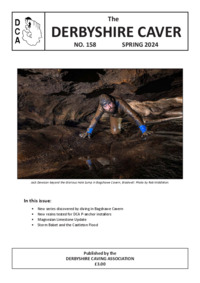Just a few thoughts, not necessarily in any particular order at this time of night.
nickwilliams said:
You are correct that PPE must be CE marked if it is to be legally sold in the EEA. However, the requirement for CE marking is to meet the essential requirements of the Directive and while the easy way to do this will be to conform to an appropriate standard, compliance with the standard is not of itself mandatory.
The Petzl Paw rigging plate being an example of carrying a CE mark but no EN Standard. There is no EN Standard for rigging plates, currently. Belay devices such as the Petzl GriGri have only recently gained their own EN Standard, EN15151-1.
Technically Petzl Vertex Best and Alveo Best helmets also come into this category as, when the chinstrap is fastened, they conform to the mountaineering standard only and when the chinstrap is unfastened they conform to the industrial standard only. Some would argue they conform to both standards but 'technically' they conform to neither.
Back to chest ascenders. there is other important information that should be marked on Cat. 111 PPE.
A unique number for one, otherwise there can be no effective quality assurance. It should also have the load used during testing. This is usually incorrectly referred to as the max safe working load or something similar. It's actually a very misleading requirement for marking PPE products. Its usually 140kg to cater for the US market.
We know what weight of caver will likely damage the rope, it tells you in the user information, so the end user can decide on their preferred factor of safety, e.g. a 200kg caver would have a better than 2:1 safety factor on a new Petzl Croll (assuming they didn't shock load it). A safety harness eye bolt that a window cleaner might attach to has a 2:1 factor of safety and the rope access industry works on a 2.5:1 safety factor, i.e. 6kN (max. impact force) x 2.5 (FOS) = 15kN = +/- 1,500kg minimum recommended anchor strength.
If you buy a safety critical product from a company such as Petzl or DMM you pay a little more. I don't mind because I know that if I have purchased it from an official and reputable reseller (not eBay) it will be a bona-fide product and I won't have to worry about whether the CE mark is real or whether it is actually a cheep Chinese knock off, because it won't be.
I had a similar experience a few years ago with some ropes being sold in the UK by a South African company with offices on the south coast. The sample they sent me had no markings whatsoever on its ends or through its inner core. I questioned this, their excuse being it was from their sample batch and they were just going through the process of the rope gaining EN1891A approval. The paperwork they sent me for the rope was very different to anything I had seen before, very confusing. They did not give me any confidence.
The rope might have been cheap but the cost of my due diligence would likely have far outweighed the cost savings on the rope. The company did get the rope certified eventually but it was years rather than the months they assured me it was going to take. The rope did perform well during testing and was very abrasion resistant. They sent through a copy of their current rope's paperwork just recently and it was no longer confusing. It looked just like the paperwork you would get from Beal, Edelrid or Teufelburger.
Their prices are no longer as cheap as they were a few years ago but are now in line with all the other reputable manufacturers selling ropes in the UK. It costs money to do things right and when it comes to Cat. 111 PPE, for protection against mortal danger, every aspect of its production should be 100% right, markings, paperwork and everything.
If a qualified PPE Examiner were asked to inspect an item of Cat. 111 PPE which had no unique number, they would remove it from service immediately.
The Fixe Ascender bought by Madness for ?26.00 inc. postage makes it about 50% cheaper than the Petzl equivalent. That should start alarm bells ringing very loudly in my mind.
Whilst Madness might not think ?26.00 inc. postage is a great loss if it turns out to be crap, I bet his wife would disagree.
We used to have a saying at one of the companies I used to work for;
Vile emptum, bis emptum (Buy cheap, buy twice)
In this case;
Vile emptum, ut moriatur (Buy cheap, might die)
Mark




